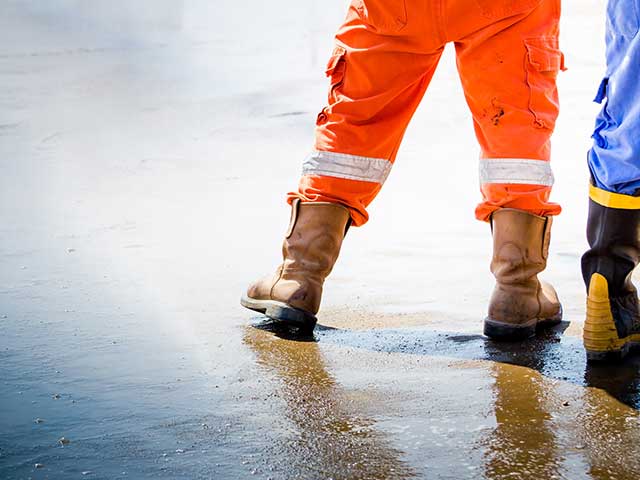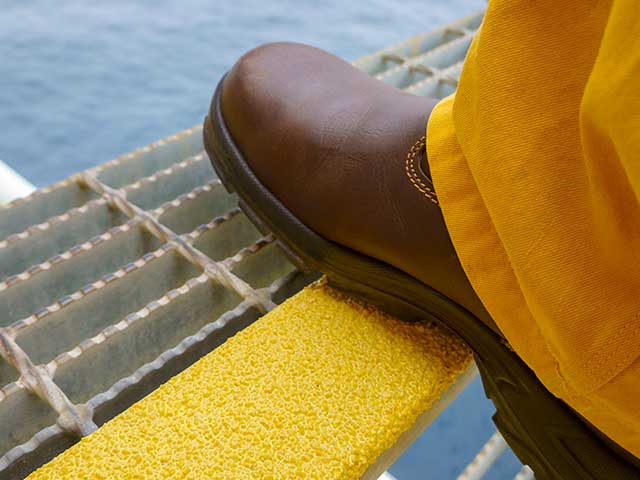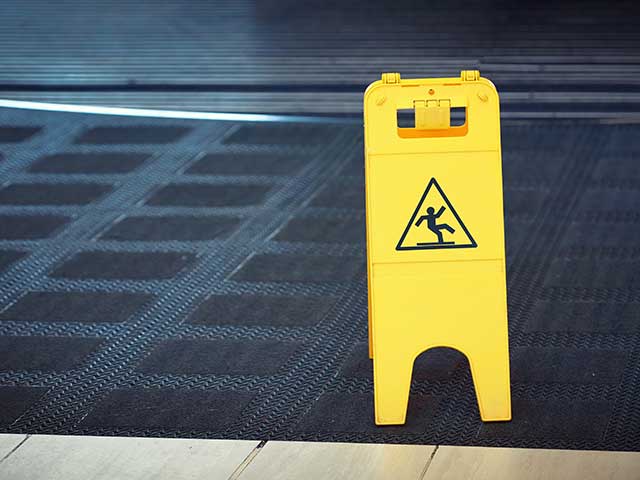Enhanced Test Method For Assessing Sustainable Slip Resistance
by Carl Strautins
Proceedings of the International Conference on Slips, Trips, and Falls 2007 – From Research to Practice, August 23-24, 2007, Hopkinton, MA, International Ergonomics Association Press.
Abstract
The purpose of this study was to identify a procedure to identify those products that have a propensity to lose their slip resistance over a relatively short time. A Gardco linear motion washability wear tester was used to conduct accelerated wear tests on a ceramic tile prior to slip resistance testing using the wet pendulum slip test method and the inclining oil wet ramp slip test method. Four grades of abrasive pads were assessed using three different pressures over a 300 mm path length at a rate of 50 cycles per minute. A 3M green Scotch-Brite abrasive pad with a 1000 g weight was found to be the most practicable when determining the loss in slip resistance. In looking at other tiles, the loss in slip resistance can occur very rapidly in the first 50 cycles, but relatively little loss occurs after 500 cycles. This introductory paper highlights the benefit of using accelerated wear test methods in combination with portable slip resistance test methods when assessing sustainable slip resistance within a quality management framework.
Introduction
Based on the current state of building construction and regulation, the main health and safety risks in buildings appear to be from slips trips and falls (Atech Group, 2003). While building regulations have reduced most societal risk, individual risks have been gaining prominence, particularly in developed countries where the cost of slip and fall public liability claims is high.
Safe design employs life cycle concepts and applies to every phase from conception through to disposal. This involves eliminating hazards and minimising risks as early in the life cycle as possible. Australian architects understand the need to specify in terms of slip resistance, obtain test results for proposed floor surfaces, and document that they have mitigated the risk of pedestrian slip incidents during the design stage. Ideally the slip resistance of surfaces will not change over time; however, slip resistance audits have confirmed that the performance of many seemingly slip resistant materials will reduce significantly over time. Thus test results obtained on factory fresh surfaces may be illusory, misleading designers into specifying products that may be potentially hazardous within weeks or months of installation.
Many building codes have safety performance requirements; not only for slip resistive surfaces, but also that they must continue to perform at the level they were originally required to achieve. This has serious implications for the architect when specifying a surface. The loss of slip resistance with use may be attributed to a range of complex interacting factors including the installation process, surface treatments, maintenance and wear. Slip resistance will always be part of a wider set of design objectives including practicality, aesthetics, cleanability, cost and functionality. These sometimes competing objectives need to be balanced in a manner that does not compromise the safety and health of those who access the building. Currently there are no recognised accelerated wear test methods to assess or predict sustainable aspects of pedestrian slip resistance. Such tests would assist organisations to minimise their risk exposure to slip and fall incidents (and litigation).
The pendulum is used in several standards, including ASTM E203-93 (2003) Test Method for Measuring Surface Frictional Properties Using the British Pendulum Tester, AS/NZS 4586:2004 Slip Resistance Classification of New Pedestrian Surface Materials, BS 7976, Pendulum Testers, and many European Norms. This portable machine can be used for onsite testing. It is thus ideal for audits that monitor the life cycle performance of tiles in normal conditions, unlike the German DIN 51130 (and AS/NZS 4586) oil wet ramp test method, which can only be used in the laboratory. However, oil wet ramp classifications are often used to specify tiles in special commercial and industrial conditions.
Experimental Method
A Gardco 12VFI linear motion washability and wear tester was used to develop an accelerated wear test. This apparatus has traditionally been used to assess the wear resistance of paint systems using nylon bristle brushes. The machine has a 100mm x 100mm friction boat, which is cradled within a fork drive. Different abrasive materials were fixed to the bottom of the friction boat, which was set to operate at a rate of 50 cycles per minute, traversing backwards and forwards over a 300 mm path length. The pressure on the test specimen was controlled by adjusting the friction boat weight.
Initially the effect of the abrasive material and the applied pressure was investigated using a dust pressed, glazed ceramic tile. Four grades of 3M nylon cleaning pads were used for the study. They are identified by colour, in order of ascending abrasiveness: White – Light Duty No.98, Blue Fine -Power Pad No.2000, Green – Heavy Duty No.86, Dark Blue – Extra Heavy Duty No.88. These abrasive pads were used in combination with three weights of 500 g, 1000 g and 2000 g. A batch of 40 ceramic tiles were tested to AS/NZS 4586 using the wet pendulum, allowing tiles which measured a dynamic coefficient of friction (DCOF) of 0.59 to be selected for accelerated wear testing. The DCOF was remeasured after every 50 wear cycles to a total of 1000 cycles.
Further accelerated wear and wet pendulum slip testing was conducted, introducing a second ceramic tile; both tiles had been used in the customer service area of high traffic volume restaurants. From user opinion surveys, tile 1 was known to maintain an acceptable level of slip resistance (typically achieving a DCOF of 0.35 after 1 year when measured in situ), whilst tile 2 had been found to become hazardous after a short period of time, (DCOF of 0.20 after 1 year). The ceramic tiles were subjected to 100, 500, 1000 and 5000 cycles of accelerated wear using a Green 3M Scotch Brite abrasive pad with a total weight of 1000 g. In order to also evaluate the slip resistance using inclining ramp test methods, worn tiles were prepared using a cleaner’s polishing/buffing machine with an abrasive pad, whilst intermittent pendulum tests were conducted until the abrasive treatment was equivalent to 5000 Gardco cycles. Slip resistance testing was conducted to AS/NZS 4586, using the pendulum test (in water wet conditions using a Four S rubber test foot, now known as ‘Slider 96’) and the oil wet ramp test. A Taylor-Hobson Surtronic Duo was used to determine Rz surface roughness.
Results
The results are shown graphically in Figure 1. Figure 1 (a) depicts the relative difference between the 4 abrasive pads. While the white and fine blue abrasive pads resulted in slight ongoing changes in slip resistance, there was a more pronounced change with the coarse green and blue abrasive pads. The green pad was easier to mount to the friction boat than the coarser blue pad. The green pad was then used to evaluate the effect of applied pressure (500 g, 1000 g and 1500 g weights) as depicted in Figure 1 (b). No significant difference was observed between the 1000 g and 1500 g weights. The 3M green Scotch- Brite abrasive pad with a 1000 g weight was thus selected for accelerated wear use in an extensive range of further sustainable slip resistance studies using the pendulum friction tester.
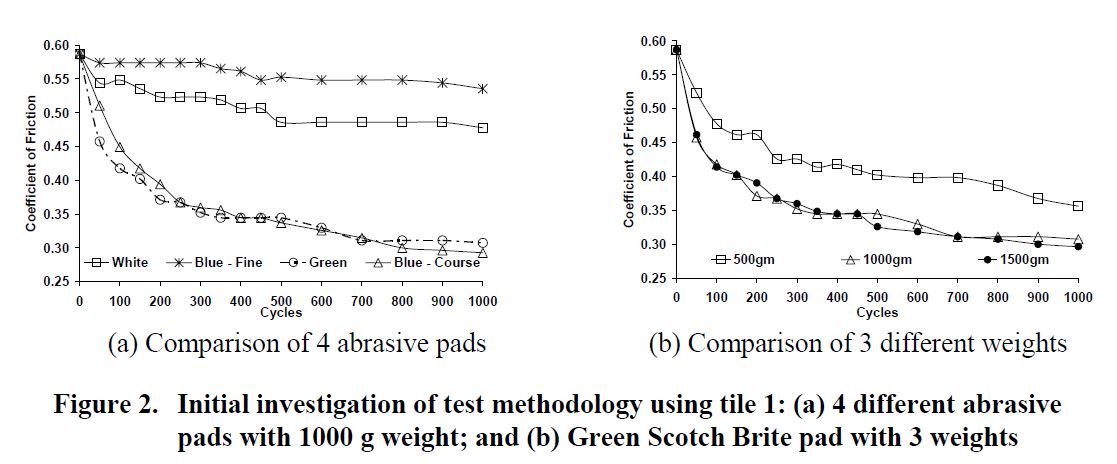
Figure 2 (a) compares the wet pendulum and the oil wet ramp test results of two ceramic tiles before and after the equivalent of 5000 cycles of wear. Tile 1 (with known acceptable slip resistance) achieved an initial coefficient of friction of 0.79 (pendulum) and 0.36 (ramp). This decreased to 0.29 and 0.10 respectively after the wear treatments. Tile 2 (known to become hazardous) achieved an initial coefficient of friction of 0.50 (pendulum) and 0.25 (ramp). This decreased to 0.18 and 0.11 respectively. Figure 2 (b) shows that there was no significant difference in Rz surface roughness.
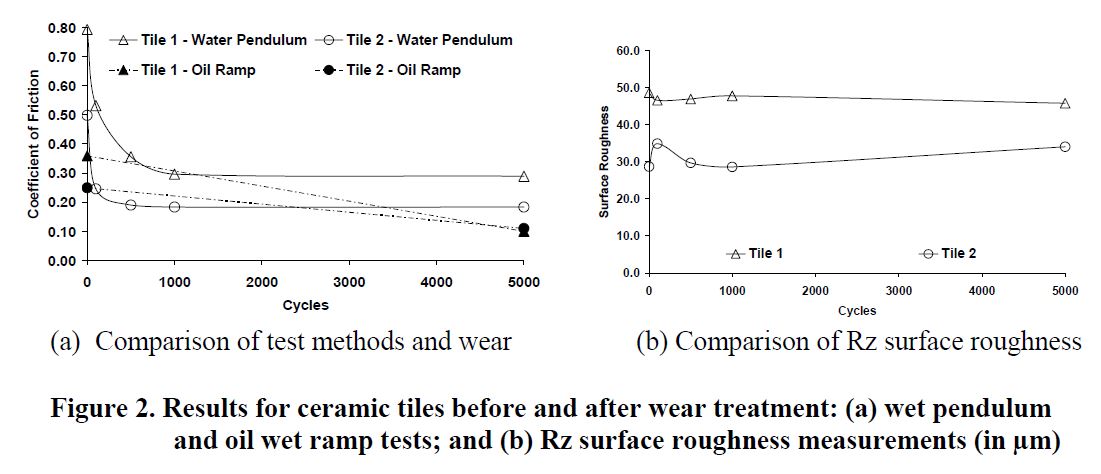
Discussion
Accelerated wear test method
The initial investigation of an accelerated wear test procedure indicated that a 3M green Scotch-Brite abrasive pad with weight of 1000gm, with rate of 50 cycles per minute over a 300mm path length was suitable for determining the loss in slip resistance using the pendulum friction tester. There was a noticeable smoother texture when felt by hand, however the change was not detected using surface roughness parameter Rz. The greatest loss of slip resistance generally occurred during the first 50 cycles with comparatively little loss after 500 cycles. The slip resistance after 500 cycles was found to be consistent with the in situ measurements at a high traffic volume restaurant after one year of usage.
This initial investigation highlights the potential benefit of using abrasive cleaning pads as part of an accelerated wear test in order to determine the probable long term slip resistance. Although not detected using the surface roughness meter, it is postulated that the inherent slip resistance is affected primarily due to the microtexture of the ceramic tile surface after polishing. Mechanically aggressive cleaning systems are known to have caused near-instantaneous slip resistant losses in some surfaces. Thus the cleaning and maintenance regime must be taken into consideration when assessing the potential long term slip resistance of a flooring system.
Slip resistance test methods
The initial pendulum and ramp test results suggest that new tiles 1 and 2 would both be suitable for external walkways. After the accelerated wear procedure, tile 1 provides a relative risk of slipping of 1 in 10,000 when assessed with the pendulum (Pye, 1994). Accelerated wear of tile 2 reduces the slip to a hazardous level, with a risk of approximately 1 in 20.
The change in oil wet ramp slip resistance was found to be relatively less when converted to a DCOF than the change in wet pendulum slip resistance. Tile 1 affords greater slip resistance initially, with both tiles achieving a similar oil wet coefficient of friction of approx 0.10 after the accelerated wear procedure. The relative difference between the results for the two test methods is due to the type of intermediate fluid, since the friction mechanisms vary significantly in these situations (Silva et al, 2006). Different tribometers, operating on different principles, often give different results as an inherent function of the tribometer and, thus, may underestimate or overestimate the available traction in some circumstances (Bowman et al, 2002).
It is important to understand that tribometers measure the friction of the two interacting surfaces and any solid or liquid medium within the system. It seems sensible that test methods should be used to simulate the intended conditions for normal usage in terms of the contaminant likely to be present and the footwear intended to be worn. For example, the wet pendulum test method is more appropriate for most external walkways and entry foyers, where the most likely contaminant is water and many people will be wearing shoes that may have a hard soling compound and a worn tread pattern.
The oil wet ramp slip test, which uses safety boots with large volumetric tread pattern and high viscosity motor oil, seems to be of little relevance for normal conditions. The oil wet ramp test is more suitable for commercial kitchens and industrial areas, where people will be using specialised shoes and viscous contaminants are likely to be encountered. The interlocking of the safety shoe tread with a highly profiled floor surface can provide a means of achieving traction that is not available to many types of footwear. The oil wet ramp result can thus overestimate the traction that will be available to normal footwear on some surfaces. The Spanish pendulum-based, safety-in-use criteria, for dry internal areas, exclude a number of oil-wet ramp class R9 products (Silva et al, 2006).
Inclusion of slip resistance in Quality Management Systems
Organisations will recognise the benefits of integrating slip resistance within the framework of a quality management system. Achieving sustainable slip resistance, through accelerated wear test procedures and ongoing auditing will assist to mitigate their risk of slip and fall incidents, as well as possible litigation. Quality Management Systems implement a methodology known as “Plan-Do-Check-Act”. It can be applied to enhanced sustainable slip resistance test methods:
Plan: Identify the current position of the organisation in relation to the risk of slip and fall incidents and examine the adequacy of current procedures;
Do: Implement accelerated wear test procedure and establish benchmarks to predict the probable long term slip resistance of proposed surfaces (assuming they are properly maintained). Preliminary data indicates that a DCOF greater than 0.35, using the pendulum after 500 accelerated wear cycles, appears to be a suitable benchmark;
Check: Periodically monitor the in situ performance and correlate results with the accelerated wear test procedure; assess effectiveness of maintenance regime; and
Act: Review the process and take action, if necessary, to modify the initial benchmarks to continually improve the accelerated wear test procedure.
Onsite testing with a reliable tribometer is an essential element within a continual improvement cycle to correlate accelerated wear procedures with insitu results. Appropriate slip resistance compliance criteria must also be based on: utilised friction demands, incidents and user opinions on existing floors, along with insitu testing with anticipated contaminants. This will enable accelerated wear criteria to be established which seek to predict the probable long term slip resistance and increase the safety of occupants over the lifecycle of a building. The results must then be evaluated to review and potentially modify the initial compliance criteria.
The pendulum is capable of being used with a variety of liquid and dry contaminants, as well as pastes, margarine, etc. The pendulum is used with both hard rubber and soft resilient rubber test feet, and it is well suited for conducting trials in industrial installations such as commercial kitchens, using oil or other contaminants. The inclining ramp test methods are poorly suited for quality management system usage, as tests cannot be conducted onsite. Despite this, ramp tests can be useful for assessing highly profiled floor surfaces that may be difficult to assess with the pendulum, as well as controlling the footwear that might be worn on such floors. Even though buffing machines lack the control desired in accelerated conditioning treatments, some ramp testing of abraded specimens is better than none.Given the anecdotal evidence that some worn profiled surfaces pose a significant slip risk, and the effectiveness of heavily cleated footwear will decrease with wear and the pick-up of solid contaminants, multiple measurement techniques will always provide the optimum outcome
Summary
The proposed accelerated wear test provides a simple and consistent means of preparing slip resistance test specimens so that one can assess the potential sustainable slip resistance of flooring surfaces. Preliminary data indicates that this enhanced test method provides a logical starting point to initiate benchmark studies within quality management systems in a range of settings. However, this is a topic of ongoing research: important supporting data will be presented in future papers.
References
- Atech Group (2003). Health and Safety Risks in Buildings, Executive Summary, Main Findings and Recommendation, Technical report to Australian Building Codes Board.
- Bowman, R., Strautins, C.J., Westgate, P., & Quick, G.W. (2003). Implications for the development of slip-resistance standards arising from rank comparisons of friction-test results obtained using different walkway-safety tribometers under various conditions. In M. Marpet & M.A. Sapienza, (Eds.), Metrology of Pedestrian Locomotion and Slip Resistance, STP 1424 ( pp. 112-136). West Conshohocken, PA: American Society for Testing and Materials.
- Pye, P.W. (1994). A brief review of the historical contribution made by BRE to slip research, Slipping Towards Safer Flooring, Paper 7, Seminar held at Rapra Technology Ltd, Shawbury, Shrewsbury, England, 29 September 1994.
- Silva, G., Muñoz, A., Monterde, B., & Quereda, F. (2006). Comparative analysis of slip resistance requirements in trafficked public premises. Qualicer 2006, VIII World Congress on Ceramic Tile Quality, Castellon Spain, Vol. 3, pp Pos 35-38.
Be absolutely assured. Safe Environments is NATA accredited for Noise testing
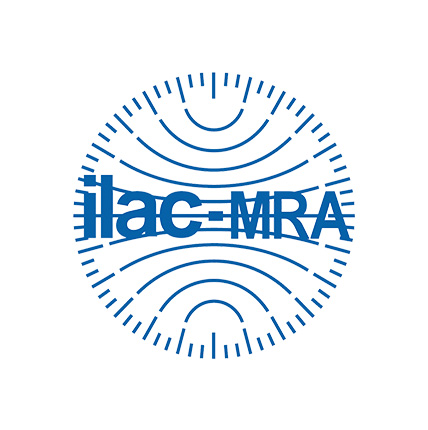
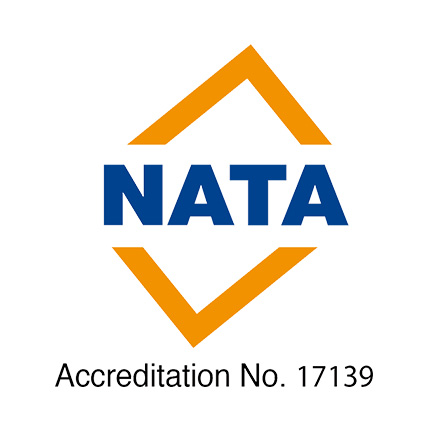
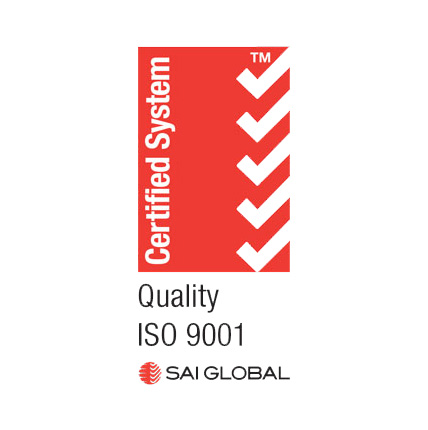
Ensure a Safe Environment
For more information on noise testing or management please contact one of Safe Environments Occupational Hygienists or Noise Consultants located in the following Australian cities:
Melbourne & Victoria
Unit 25, 1 Millers Rd Brooklyn VIC 3012 Australia
NSW - Sydney, Newcastle & Wollongong
Unit 4, 40 Bessemer Street, Blacktown NSW 2148
